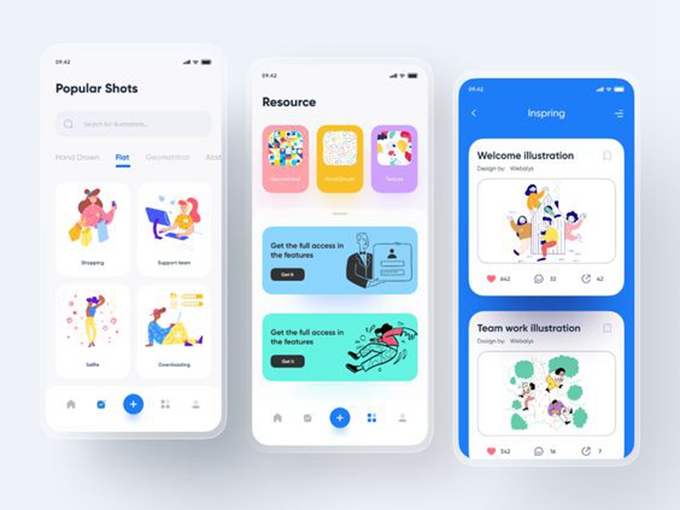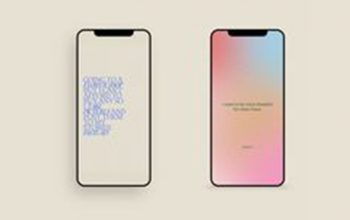Like many individuals, whether or not working remotely from residence or in-office, we spend lots of time on Slack. And for these of us who’re Slack regulars, we all know and love Slack for the witticisms, anecdotes, and regional idioms that the app greets its customers with on the every day.
It begs the query, how does an enterprise like Slack join with its customers throughout the globe so meaningfully? (A lot in order that they will tout having customers in additional than 150 nations.)
Table of Content
- mobile app localization
- ios app installs
- keyword ranking app
- purchase appstore reviews
The reply is localization. In her weblog publish, Anca Greve from Slack wrote, “localization builds belief with our clients in a language that they perceive, with cultural references which might be acquainted to them.”
Subsequently, in a world smartphone economic system, that could be a trillion (sure, with a T) greenback economic system. And, with $118 billion (sure, with a B) of that trillion-dollar economic system generated through apps, cell app localization can actually blow your app UP.
One of the simplest ways to achieve world visibility is localizing your app for varied nations and languages. Cellular app localization completed proper opens the door to the $118 billion economic system and positions your app to rule the world.
What’s cell app localization?
It’s the apply of adjusting the functionalities and interface of an app for world markets. The ability of localization lies in its means to avail your app to thousands and thousands of latest and potential customers throughout the globe.
And in case you’re questioning, cell app localization is greater than translation, as a result of it considers issues like linguistics and cultural/technical variations. The intent is to duplicate the app to look and performance because it was initially created for its native and goal language.
Right here’s an ideal instance of an internet and cell commerce app localizing and globalizing concurrently:
Shopify intends to empower entrepreneurs to get on-line and promote so that they make localizing straightforward. Within the picture, on the left, a UK buyer is prompted to an exterior retail website. On the fitting, the Canadian buyer is directed to “add to cart” and purchase instantly from the web site. Localizing might be so simple as distinctive code tags (do_not_sell_to_UK) that ship intent seamlessly to every location.
Why is cell app localization necessary in a world economic system?
On probably the most fundamental stage, app localization opens your app to customers who don’t converse your language. However that’s not all; localizing in a world economic system is a should for 3 causes:
1. Enhancing the worldwide consumer expertise
By no means underestimate the ability of a optimistic UX. As we speak’s customers spend a mean of 4.8 hours per day on cell apps. The AppsFlyer blogosphere is crammed with materials on the significance of UX, your app, and methods to capitalize on these 4.8 hours.
On the subject of your worldwide customers, localization of your cell app has by no means been extra essential. A correctly translated app might help you break into a brand new market — by creating optimistic experiences for patrons, who will then develop into advocates of your app.
And should you don’t consider us, Google discovered that “89% of persons are more likely to suggest a model after a optimistic model expertise on cell.”
2. Ramping up your app retailer exhibiting
First issues first, although. To really go world, you want a worldwide viewers. That is exactly why the iTunes App Retailer and the Google Play Retailer present choices that can assist you and your app.
The iTunes App Retailer is out there in 175 nations and 40 languages, whereas Google Play is out there in 190+ nations.
iTunes gives Apple builders a step-by-step information on constructing a localized cell app. The truth is, it gives the Xcode export for localization. This permits builders to export localizations for the areas and languages they’re able to assist.
Equally, Google gives Android builders a “how-to” to translate and localize their apps. As a substitute of an exporter, Google means that you can “add translations in your app’s retailer itemizing web page, APK recordsdata, strings, or in-app merchandise. You’ll be able to add them your self or buy and apply them by means of the Play Console.”
Backside line, localizing your cell app widens the web of your potential customers. Now, extra individuals can discover your app using key phrases of their native languages, which can really open the door for the world to enter (and hopefully set up your app).
3. Boosting worldwide app engagement
Analysis reveals that for cell shoppers, 78% of buyers usually tend to make a purchase order if the web retailer is localized. It’s clear that to ensure that your app to stay aggressive and finally dominate worldwide, localizing is a should.
What’s the distinction between cell app localization and cell app internationalization?
App internationalization sounds prefer it could possibly be a synonym for app localization, however whereas the 2 processes are associated, they’re not the identical. Internationalization is about customizing code, and localization is about customizing content material.
Understanding app internationalization
Internationalization (typically abbreviated to i18n) is the strategy of making your code previous to localization.
A big distinction between localization and internationalization lies in the truth that localization doesn’t require pre-planning forward of the event course of, whereas internationalization does. It’s because it’s more durable to change code for internationalization as soon as it has been created.
What are the challenges of cell app localization?
As soon as thought-about, these challenges are actually alternatives to broaden your information and query your biases. And the worth of these classes goes past localizing your app, as a result of variety is what makes people superior (and it’s people on the opposite facet of your app).
1. Tradition clashes
One of the simplest ways as an instance these potential cultural clashes is with emojis and a spherical of applause, until you occur to be in China. As a result of, in China, that clapping emoji “is a logo for making love.” Makes you rethink each message you ever despatched your Chinese language colleagues, huh?
All the way down to the final emoji, localization requires a cultural deep-dive to make sure you are delighting and never mortifying your potential new customers.
2. Creating house
We imply this one actually and figuratively. Within the broader sense, current in a world world means making house for various views. Within the literal sense, meaning when localizing, you have to think about Semitic languages like Hebrew or Arabic.
You see, languages that go left to proper are acquainted, however what about languages that go from proper to left? How will that have an effect on your interface and customers’ experiences?
Apple’s App Retailer helps builders meet this problem head-on:
3. Worldwide courting (no, not that)
Until you’ve already localized an software, you in all probability don’t notice how in depth date formatting is all over the world.
For instance, in case your app is able to be localized in English, German, and Japanese, meaning you’re able to format your dates in three distinct methods (no, actually):
6 greatest practices to assist your app go worldwide
Localization quantities to adapting your app to suit a goal market’s preferences. This contains measurement models, forex conversions, codecs, cultural norms, legalities, and technological capabilities.
It appears overwhelming, however localizing your app can really feel much less daunting should you prioritize the next greatest practices:
1. Make many assumptions about your textual content
Totally different languages require various quantities of house. And it’s not excellent to left languages that that you must think about. Take into consideration Chinese language, Japanese, Korean, or different non-Latin script languages.
All of the sudden, you’re confronted with vertical textual content development. That is exactly why, within the design and construct section, you have to construct with flexibility, and it’s why your app must be internationalized earlier than being localized.
Takeaway: Construct and design flexibly to be able to accommodate varied languages and translations.
2. Take into account locale and use ISO codes
Eager about language is apparent. However in terms of your worldwide base, contemplating locale is essential.
Take this situation for instance. You’re based mostly in America and your greatest good friend in Canada, and also you’re purchasing (in English) for a similar merchandise on the identical cell app. When it comes time to take a look at, your merchandise is served to you in USD, and their merchandise is served to them in CAD. How did that occur so seamlessly?
Takeaway: Add ISO codes. It will make it easier to with nuances in language, forex, and unit measurements from one locale to a different.
3. Make and use a glossary and magnificence information to make sure world model consistency
Whether or not you outsource your translations or translate in-house, construct a glossary and magnificence information in your linguist/s to allow them to create worldwide model consistency.
As your website grows in content material and world attain, making a handbook in your linguist/s is one of the simplest ways to ensure your model interprets its intent and never simply its phrases.
Takeaway: It’s a lot more durable to do that after you’ve already localized. Subsequently, from the primary day of your app construct, begin codifying terminologies in your linguist/s. This manner, as your model grows, the interpretation and magnificence consistency can sustain.
4. Beta take a look at and go cultural
Take cell A/B testing even deeper. Take a look at your content material, UI (consumer interface), and UX on an entire new cultural stage.
86% of patrons can pay extra for a greater buyer expertise. One of the simplest ways to please your customers is to present them an expertise they perceive and need to have interaction with. By offering culturally related context and content material, you improve the probabilities of optimistic consumer experiences.
Takeaway: Take a look at with choose customers and native audio system in every locale you’ll goal earlier than your full launch.
5. Keep away from exhausting coding codecs
The one factor we will persistently financial institution on on this world is its inconsistency.
From date codecs like a 24-hour vs. a 12-hour cut up, we simply can’t appear to agree on any of it. Subsequently, keep away from hard-coding any textual content just like the plague, particularly in terms of dates, instances, and currencies.
Takeaway: Use customary codecs to simply adapt to this point, time, and forex adjustments in your construct.
6. Localize within the app retailer
The battle is actual in terms of being found in app shops, which makes this one paramount to each different greatest apply (the BEST greatest apply).
Localize your app retailer metadata and do it in as many locales as potential. Even when your in-app content material just isn’t but localized for these locales, begin within the app retailer. Localize your app’s identify, key phrases, description, and any screenshots.
Inevitably, this may enhance your app’s discoverability for brand new areas. And there’s the additional benefit of app retailer optimization (ASO). Nonetheless, going native additionally means optimizing. Localization is an integral a part of ASO — as a result of it opens up a world of latest customers in new markets for you.
Takeaway: Localize within the app retailer even for the locales your app isn’t prepared for (but). The very first step to having an app that guidelines the world is ensuring your app is seen worldwide.
Key takeaways
As soon as your app is localized, the method doesn’t cease there. As your app’s attain and model develop, you’ll have so as to add options or make adjustments to your app. In a manner, going native to go worldwide is a course of with out an finish (similar to app improvement).
So, ICYMI, right here’s every part that you must keep in mind about methods to localize your cell app and dominate the world:
- Going native is the way in which to make your cell app go world.
- Cellular app localization is adjusting the functionalities and interface of an app for world markets.
- Localizing your app is a should to compete and dominate in at the moment’s quickly increasing world smartphone economic system.
- Earlier than localizing, your app should be internationalized. Localization is concerning the content material, and internalization is concerning the code.
- When localizing your cell app, there are challenges to contemplate, like cultural variations, creating house, and worldwide courting. That stated, they’re -worth the consideration in your app and generally!
- When localizing, think about 6 greatest practices: versatile textual content measurement, locale (not simply language), model consistency, beta testing, avoiding exhausting codes, and app retailer localization.




